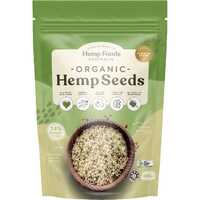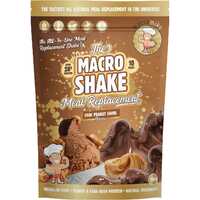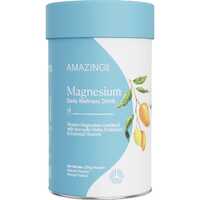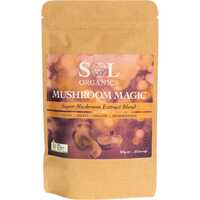You can't walk far in a big city without seeing a juice bar full of healthy green beverages. From spirulina and chlorella to wheatgrass and celery, these beneficial ingredients have captured the world's attention. You can buy healthy green drinks almost anywhere, or purchase raw ingredients from health food stores to make at home. When green superfoods are combined with delicious fruits and nutritious powders, you can boost your energy levels, support your immunity, and improve your overall health.
Let's take a detailed look at healthy green drinks. We'll analyse their nutritional benefits, look at popular active ingredients, and review healthy additives so you can make these delicious drinks at home.
The History of Green Beverages
Calling the last few decades a "health revolution" is not too much of a stretch. In the post-World War II environment, heavily processed and refined foods started to take over the Western world. While this gave us access to more flavours and helped to address food security in affluent nations, there was also a downside. Fresh ingredients were not the centrepiece of every meal like they once were, and people started consuming way too many sugars, salts, and synthetic additives.
As this pattern progressed in the latter half of the 20th century, obesity levels skyrocketed and heart disease became a very real problem. From the late 1960s onward, there has been a backlash against the convenience of heavily processed foods. While this "revolution" hasn't affected everyone, many people are now enjoying the benefits of a healthier lifestyle. This movement has taken many forms, from a rise in vegetarianism and veganism to the proliferation of raw foods and organic produce.
Modern green beverages were invented a few years before the War, with Norman Walker inventing the world's first juicer in 1936. His concept was developed slowly over many years, and the first masticating juicer hit the shelves in 1954. Green juices and smoothies hit the mainstream in the 1990s, due to attention from Hollywood celebrities and growing health and beauty awareness in the community. This movement has grown by leaps and bounds since then; with new juicing technologies, ingredients, and recipes turning more people onto the wonderful world of green drinks.
The Health Benefits of Green Drinks
Green foods are the most nutrient-dense foods on the planet. Coloured green pigments protect plants from predators, pathogens, and climate conditions, and they also attract pollinators. The colour green is the chlorophyll in plants; which absorbs light from the sun, produces oxygen for the planet, and boosts nutritional value for human consumers. Whether you're talking about seaweeds, grasses, or leafy and cruciferous vegetables, most green foods are inherently healthy.
The benefits of green pigment depend on what's being consumed, but most ingredients offer the following advantages:
- Vitamins - Greens contain lots of vitamins, including healthy amounts of vitamins A, C, and K.
- Minerals - Green foods contain calcium, iron, iodine, selenium, chromium, and potassium, among other minerals
- Antioxidants - Many of the plant compounds in green foods have potent antioxidant functions.
- Phytonutrients - Many greens contain beta-carotene, lutein, and zeaxanthin, which protect our cells from damage.
Along with green ingredients having a healthy nutritional profile, the process of blending has a powerful impact on how these nutrients are consumed.
The Power of Blending
Before we look at the specific ingredients used in green drinks, it's important to understand the role of blending. When you break down and mix foods with force, it changes both how they're consumed and how they're digested. We digest liquids and smaller particles easier, which is one of the reasons green beverages have such a powerful impact. Eating green foods in blended form is also highly efficient, as you can get more nutrients into your diet without having to prepare or even chew them.
Potential Disadvantages of Green Drinks
Like most things in life, however, it's important to be careful when consuming green drinks. Green beverages can be too cleansing for some people, especially those with a history of toxic food exposure or environmental and dietary abuse. While the process of blending is highly efficient, it can sometimes be a bit of a shock. For this reason, it's important to start slowly with green drinks and limit ingredients to avoid overtaxing your digestive system. Depending on your lifestyle and personal gut health, you may also prefer to enjoy these drinks on a full or partially full stomach.
Active Green Ingredients
When you're making a green healthy drink, it's important to have one or two base ingredients. Many of the ingredients on the following list have a strong and rather unique taste, so it makes sense to find out what you like. While you'll probably grow to love them all over time, using too much of the good stuff may put you off at first. When you start with a few ingredients, you can find out what you like and build up preferences as you go.
Adding a small number of active green ingredients also has nutritional advantages. Too many powerful greens can sometimes have a negative impact on your digestion, and not all ingredients work for all people at all times. With lots of things in the mix, it's almost impossible to recognise their effects. If you include one or two ingredients and pay close attention, you can tune into your body and enjoy all the advantages these drinks have to offer.
When combined with a healthy diet, green drinks can boost your energy levels and supercharge your health. The following ingredients are the most popular and powerful:
Spirulina
In many ways, spirulina started the green drink revolution. Before this colourful seaweed hit the market, it was almost impossible to buy healthy green juice out in public. Spirulina is high in protein and iron, and it's also high in B vitamins, chlorophyll, beneficial fatty acids, and antioxidants like beta-carotene and lutein. Among other things, this powerful green is beneficial for allergies, immunity, gut health, cholesterol, and energy.
Chlorella
As the other ultra-healthy green, chlorella continues to rise in popularity. This seaweed is normally sold as a nutrient-rich powder, and it's easy to add to smoothies and juices. The antioxidants and other nutrients in chlorella have beneficial anti-bacterial, anti-viral, and anti-tumour properties. This seaweed also helps to increase white blood cell levels, which can stimulate immune system function and help to fight infection.
Other seaweeds
Along with spirulina and chlorella, the two biggest names on the green beverage menu, some other seaweeds can also be beneficial. Kelp and dulse seaweeds can both be added to green drinks. Kelp adds vitamin K, folate, magnesium, and other nutrients; and dulse is rich in iodine, protein, fibre, potassium, vitamin B6, and iron.
Green grasses
Seaweeds may be the kings of the green revolution, but grasses are a very close second. There are lots of edible and highly nutritious grasses out there, including barley grass, wheatgrass, and alfalfa. Barley grass has relatively pale green leaves, but they pack lots of nutritional punch. This ingredient is rich in vitamins A and C, both of which act as antioxidants.
Wheatgrass is the green leaves from a young wheat plant, with Triticum aestivum the most widely-used species. You can juice these leaves or make them into a powder to access antioxidants like glutathione, vitamin C, and vitamin E. Alfalfa is another grass that's great for juicing, and it has lots of vitamin K, folate, copper, and magnesium.
Green vegetables
Grasses and seaweeds get most of the attention in the juicing world, but it's also possible to blend leafy greens and other vegetables. Most of the greens you add to your main meals can also be added to your liquid snacks, just use smaller portion sizes and cut them up well. Kale is a popular addition, with this rather trendy leaf cabbage having lots of vitamin C, vitamin E, selenium, and beta-carotene.
Spinach is also a big hit in the smoothie world, although just like kale, too much can lead to a bitter taste. Spinach has lots of fibre; vitamins A, C, and K; folic acid; iron; and calcium. Two not-so-leafy greens that are often juiced are celery and cucumber. Both of these vegetables have a fresh neutral taste; and they both add lots of vitamins, minerals, and antioxidants.
Wonderful Additions for Extra Taste and Nutrition
While you can add almost anything to your green juice or smoothie, most popular ingredients fall into one of two categories: taste enhancers, and nutrient boosters. While these categories are not mutually exclusive, getting the balance right is the key to making a delicious healthy drink.
The first category includes a number of fruits and spices. These ingredients are all healthy in their own right, but they're largely added for taste purposes. The second category includes nutritious powders and seeds, which help to boost micronutrients and antioxidant levels while offering their own unique taste sensations.
Let's look at the best natural ingredients to add to your next green beverage:
Delicious fruits and spices
- Bananas
- Apples
- Citrus fruits
- Pineapples
- Ginger
- Berries
- Cinnamon
- Honey
Nutritious powders and seeds
- Protein powder
- Cacao powder
- Hemp seeds
- Maca powder
- Chia seeds
- Acai powder
- Turmeric
- Prebiotics
If you want to enjoy a ready-made drink or make your own delicious beverage at home, it's important to have a great source of healthy food products. From perfectly blended juices to superfood powders and seeds, Healthy Being has everything you need, all at unbeatable prices. So shop now and enjoy free shipping options across Australia and worldwide delivery!


 Certified Organic
Certified Organic Vegan Friendly
Vegan Friendly  Vegetarian
Vegetarian Organic Ingredients
Organic Ingredients Dairy Free
Dairy Free Gluten Free
Gluten Free Keto Friendly
Keto Friendly


































